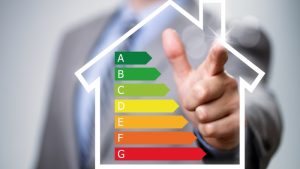M BIE recently released their observation that one available lever to becoming carbon neutral by 2050 is to reduce building-related emissions in existing buildings.
BIE recently released their observation that one available lever to becoming carbon neutral by 2050 is to reduce building-related emissions in existing buildings.
This represents the belief that refurbishing existing buildings rather than demolishing and building new buildings was a more efficient way of lowering the carbon emissions in buildings.
MBIE’s description of deep retrofits?
To convert existing buildings to carbon-neutral buildings, deep retrofits are required.
Deep retrofits:
- Minimise the use of high-emission and non-recyclable construction materials in the retrofit process
- Replace the reliance on fossil fuels with green energy sources
- Enable the building envelope to be more energy efficient
To get an idea of the volume of the work that is required for deep retrofits in New Zealand, below are some statistics on the portion of New Zealand houses with double-glazed windows, insulation, and the types of heating used:
- Double-glazed windows: According to the BRANZ (2015) House Condition Survey, 10% of dwellings had double-glazing for all windows, while 8% had a mix of single and double-glazed windows[5]. These rates increased to 16 and 9% in 2018 [6].
- Insulation:Roof: According to the BRANZ 2018 Pilot Housing Survey, 49% of surveyed houses had less than 120 mm roof cavity insulation [6].
- Underfloor: 23% of the surveyed houses that could have subfloor insulation had less than 80% insulation coverage in 2018 [6].
- Wall: BRANZ estimated that 53% of New Zealand houses had no wall insulation in 2015 [5].
- Heating: According to the 2018 Census, 52.5% of New Zealand houses still used natural gas, wood, pallet, or coal (in combination or without other heating systems) for heating purposes [7].
Find out more about MBIE’s deep retrofit review, the estimated number of NZ houses and references
Enstall can help you
Learn more about how to start the journey to reduce energy waste, improve comfort, and step towards carbon mitigation with our DeepRetr0fit home assessment and report.